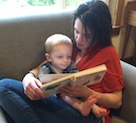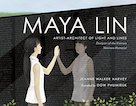Allison Behne
Summer is here, and for many children that means time to play outside with friends, as was the case in our neighborhood recently. After a full day of playing outside, our neighborhood clan of eight decided to help a friend by suggesting how he could get his loose tooth out. With no loss for ideas, they started with what seemed the simplest suggestion (eating an apple) and continued through the list until the tooth came out with a string and the hit of a Wiffle ball.
The children were proud of their efforts until two realizations set in:
Mom was right, it wasn’t a good idea. The tooth was pulled out so forcefully, it chipped a permanent front tooth on its way out.
The tooth did not stay attached to the string and was now lost somewhere in the grass.
This dampened their spirits a little, but the excitement over the fact that the idea had actually worked fueled their motivation to find the missing tooth.
First, they reviewed video footage to determine the trajectory of the tooth, made a plan, and went to their homes to grab flashlights. After three hours of warding off mosquitoes and painstakingly combing through blades of grass, they wrote a letter to the tooth fairy explaining the events of the evening and turned in for the night.
.jpg)
I was inspired by their persistence and problem-solving strategies. When the sun went down, they grabbed flashlights. When the mosquitoes got thick, they covered themselves in bug spray. They had different ideas about the best plan of action and worked together to strategize. It really doesn’t matter that they didn’t find the tooth; what matters is that they didn’t give up. The persistence, teamwork, and problem solving exercised that evening will benefit each of them next time they have something they want to tackle.
I plan to keep these lessons in mind and apply them to classroom challenges I may face in the future.
1. Enlist the help of friends and colleagues; they may shine the light that helps solve the problem.
2. Brainstorm all possible solutions and then determine where to start.
3. Once we start, persevere . . . It may not be easy, but easy won’t solve the problem.
4. Use all available resources—we may not need flashlights and bug spray, but we should use any and all available resources that help us meet our goal.
And . . . most important . . . ask yourself, What would my mom say?
Look for your email invitation to
two upcoming back-to-school events
- Online seminar. Two modules to help you plan and start Daily 5 and CAFE in your upcoming classroom. Half-price for website members and recent professional development event participants. Available starting July 21.
- Essential Elements webinar. Free overview to help you benefit from new guidance tools for teaching with Daily 5, CAFE, and Math Daily 3. Available starting August 11.
News from The Daily CAFE
 Raising Readers . . .
Raising Readers . . .
A Thousand Books Pave the Way for Kindergarten*
Getting hands into the books of little ones is one of the most important things we can do. .
 Math Matters. . .
Math Matters. . .
How Often Should I Change Math Activities?*
We often pull these books off the shelf to help us with individuals or small groups struggling with a skill or who have missing pieces in their conceptual understanding.
 Book Looks . . .
Book Looks . . .
Here are two great nonfiction titles for strategy instruction.
• Maya Lin; Designer of the Vietnam Veterans Memorial by Jeanne Walker Harvey
• Grace Hopper: Queen of Computer Code by Laurie Wallmark
 Focus on Health . . .
Focus on Health . . .
Balance Your Energy
Carol reminds us about energy cycles and the importance of finding periods of calm.





